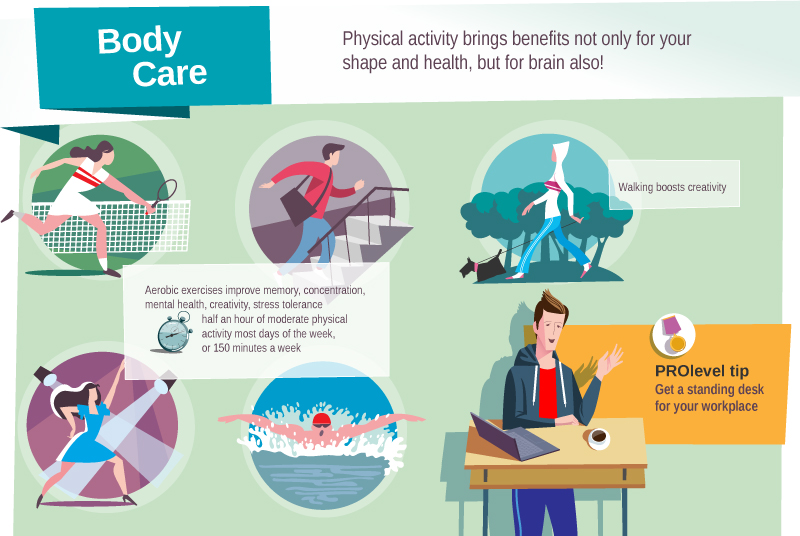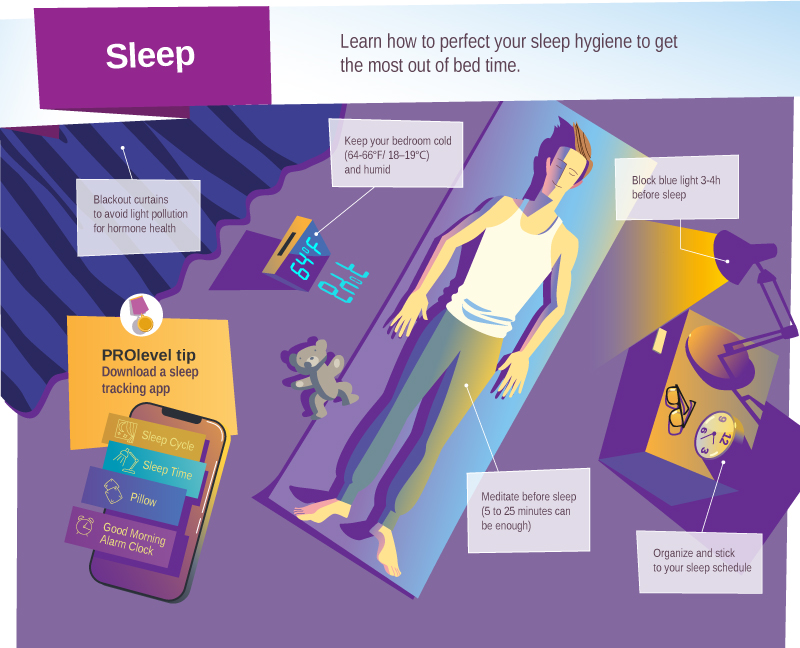Staring at a blank screen and waiting for the words to flow is a struggle that most writers have experienced at one time or another. I’ve been through this myself and have put together a list of tried and tested biohacks specifically for writers wanting to increase their productivity.
In my journey towards becoming a better, more prolific writer; I’ve focused on developing skills and habits that increase creativity, organization, concentration, and intelligence, as well as decreasing mood swings, sleep disorders, and procrastination.
I don’t promise that you’ll become as successful as a writer Eddie Morra (Bradley Cooper’s character in Limitless), but you will boost your writing productivity, and I’m almost willing to guarantee that you’ll end up boosting your overall life quality as well.
Improve your writing productivity easily
In Limitless, there is a drug called NZT that enhances mental acuity but, unfortunately for us, there is no such magical pill in real life. Instead, by focusing on forming long-term positive habits, you’ll find the hacks that will enhance your productivity and banish writer’s block for good.
I’ve created an infographic of my top 25 biohacks; it’s a quick reference guide to help you focus on the changes that can be made to improve your productivity.

Embed Code:
Biohacking is the process of making positive lifestyle changes in order to feel your best by “hacking” your biology. The five key areas of biohacking that will give you the boost you need to improve your writing productivity include brain care, body care, nutrition, supplements and drugs, and sleep.
Brain Care

Boosting your brain’s performance using different strategies to improve stress tolerance, positivity and creativity have been proven to increase productivity.
1. Practice Gratitude and Forgiveness
Exercises that focus on gratitude and forgiveness have been linked to increased decision-making abilities. Studies show that feeling and expressing gratitude positively influences emotions and health and can improve your sense of well-being by 10% making you more productive. Effective gratitude and forgiveness exercises include Gratitude Journaling, writing letters, custom term papers, and forgiveness visualization.
2. Create New Habits Easily
Research shows that it takes on average 21 days to create a new habit. Great tools for cultivating new habits (or getting rid of old ones) through behavior training include the Pavlok wristband (offline), and the Pavlok Chrome extension (online).
Pavlok wristbands help to break bad habits and build good ones by following your habits through internal sensors, motion tracking, and digital data. The wristband delivers a stimulus when you engage in that habit. Your brain then associates the stimulus with the habit, creating an aversion for bad habits or a positive association for good ones.
3. Use Music To Increase Your Attention Span
Apps such as Focus@will can boost your attention span by up to 400% using neuroscience-based music channels to help you focus.
4. Practice Meditation Daily
Meditation has a positive impact on productivity, self-control, and memory. Even 5 minutes of meditation daily increases focus and attention, decreases depression and stress, and makes you more compassionate. The ideal length for meditating differs from person to person, but it is between 5 and 45 minutes per day.
5. PRO LEVEL: Use Neurofeedback Programming
Neurofeedback measures your brainwaves producing a signal that can be used as feedback (presented as audio and/or visual) to teach you self-control your brain function. It increases IQ by an average of 12 points, and creativity by an average of 50%.
Body Care

Looking after your body through exercise leads to improved brain function and productivity. Here are three things you can do to look after your body:
6. Do Aerobic Exercise
Aerobic exercise such as swimming, stair climbing, tennis, squash, or dancing has a positive impact on mental health. It helps with memory, concentration, mental health, creativity, and stress tolerance. Around a half-hour of physical activity, most days or 150 minutes per week is considered a good baseline.
7. Boost Creativity by Going for a Walk
Take a walk outside to boost creativity; a Stanford study showed that a person’s creative output increased by an average of 60% when walking.
8. PRO LEVEL: Invest in a Standing Desk
Getting a standing desk for your workplace can increase your productivity by up to 10%, they are used by many of the top tech companies including Facebook and Google.
Nutrition

Overeating, or eating the wrong foods, impacts productivity. Simple steps such as monitoring your carbohydrate intake will help prevent insulin spikes which flood your brain with sleep hormones such as serotonin and tryptophan. Dietary habits also have a direct impact on circadian rhythms which govern when we feel alert and when we feel tired.
9. Start Your Day With the Perfect Coffee
Bulletproof’s formula for perfect morning coffee:
2 ½ heaping tablespoons of coffee + 1 cup of hot water + 2 tablespoons of coconut oil + 2 tablespoons of grass-fed butter -> emulsify in a blender and drink.
It is important to start with a single teaspoon of coconut oil and butter as it can be stressful for your brain for the first time. Build up slowly to 2 tablespoons of each. The formula is so popular even Jimmy Fallon has tried it!
Caffeine provides energy, enhances cognitive function, and increases your memory (as well as decreasing your risk of cancer and diabetes). Healthy fats from the butter and coconut oil provide MCT oil that gives a powerful mental boost and provides fats that are absorbed fast and efficiently but won’t raise your blood sugar.
10. Exclude Refined Sugar And Saturated Fats From Your Diet
This includes candy, fruit juices, bread, pastries, deep-fried foods, and pasta. Saturated fats increase your risk for heart disease and strokes, while refined sugar contributes directly to type 2 diabetes, heart disease, and nonalcoholic fatty liver disease.
11. Start Eating “Smart” Foods
“Smart” foods include blueberries (which protect your brain from oxidative stress and improve learning capacity), wild salmon (rich in omega-3 fatty acids which are essential for brain function), and dark chocolate (with its powerful antioxidant properties and natural stimulants that enhance focus and help produce endorphins).
12. Drink Good Quality Water
Use a charcoal water filter or drink glass-bottled water to avoid mold and fungi from pipes. An activated charcoal filter can remove 90% of fungal contamination in tap water.
13. PRO LEVEL: Try Fasting
Intermittent fasting has a number of positive effects on your body and brain (and may even help you live longer. Start with 16:8 intermittent fasting. This involves eating only during an 8-hour period and fasting for the other 16 hours of the day. Then transition to weekly 5:2 (also known as monk’s fasting) where calorie consumption is reduced for two days of the week (with regular food consumption for the rest of the week).
Supplements And Drugs

Some supplements and drugs offer evidence-based improvements to productivity by jumpstarting your brain and helping you stay focused.
14. Lithium
Lithium is a powerful mood stabilizer offering beneficial cognitive effects.
15. CILTEP (Chemically Induced Long-Term Potentiation)
CILTEP speeds up the process of learning new skills and maintaining new neurons connections which help you stay focused and motivated.
16. Magnesium
Magnesium has been linked to improving stress tolerance, better sleep quality as well as increasing memory and cognitive function.
17. Vitamin D
Vitamin D improves cognitive performance by offering protection from free radical damage. Note: don’t take a Vitamin D supplement at night, as it has a negative impact on melatonin production which is essential for sleep.
18. Krill oil
Krill oil is packed with DHA, EPA, and Astaxanthin which work together to improve neuron communication, leading to increased productivity.
19. PRO LEVEL: Get A Personalized Assessment
Know what your body needs. Test your vitamin, mineral, and hormone levels, as well as genetic markers to improve your data and get personalized prescriptions from your doctor. Serge Faguet spent 4 -5 years developing a list of supplements and pharmaceuticals that work for him in consultation with medical professionals. They’ve helped him on his biohacking journey to improve (among other things) his productivity.
Sleep

There are hundreds, if not thousands, of studies proving that sleep is vital for productivity. Recent findings indicate that sleep deprivation causes economic losses to US companies of $411 billion per year (the equivalent of 1.23 million working days).
Adults need between 7 and 9 hours per night for peak productivity, and sleeping less than 6 hours per night increases a person’s mortality risk by 10%.
20. Use Blackout Curtains or a Sleep Mask
73% of Americans rated a dark room as an essential factor for getting a good night’s sleep. Light inhibits the secretion of melatonin (a hormone that naturally promotes sleep). By keeping your bedroom as dark as possible, you give yourself the best chance of a good night’s sleep.
21. Create and Follow a Sleep Schedule
Try to go to bed and wake up at the same time every day. Create a habit by following the same routine in the evening, and setting an alarm for the same time every morning.
22. Block Blue Light 3 – 4 Hours Before Sleep
This should mean avoiding TV and mobile phones, but that is not always realistic. Gunnar orange-tinted glasses can come in handy. Ensure that the lights in your home are fitted with Philips Hue light bulbs or use color-changing LED strips available from Amazon or IKEA.
23. Keep Your Bedroom Cool
As you fall asleep, your body temperature naturally drops. By cooling your bedroom, you can jumpstart the process making it easier to drift off; 60 – 67 degrees Fahrenheit is considered ideal.
24. Meditate Before Sleep
Meditation before sleep calms the mind; this practice of relaxation can work to prevent insomnia as well as helping a person fall asleep faster. A university study found that 58% of insomniacs significantly improved the quality of their sleep by meditating before bed.
25. PRO LEVEL: Download a Sleep Tracking App
Sleep apps help track circadian rhythms by measuring sleep cycles and REM sleep, sleep latency (how long you take to fall asleep), and they can also help you wake up at the right time based on your sleep cycle. There is a range of different sleep tracker apps to choose from including Sleep Cycle, SleepBot, Pillow, and Sleep Better.
Disclaimer:
The content in this article is for educational and informational purposes only and is not intended as medical advice. I, the author of this article and infographic, am not a medical professional. As such, the information shared, and studies referenced in this article should not be used to treat, prevent, or diagnose any disease or health illness. Before acting on the information presented here, please consult with a healthcare professional. Any statements or claims about the possible health benefits conferred by any foods, supplements, essential oils, or lifestyle changes have not been evaluated by the Food & Drug Administration or a medical professional and are not intended to diagnose, treat, cure or prevent any disease. I, the author of this article and infographic, will not accept responsibility for the actions or consequential results of any action taken by any reader.







